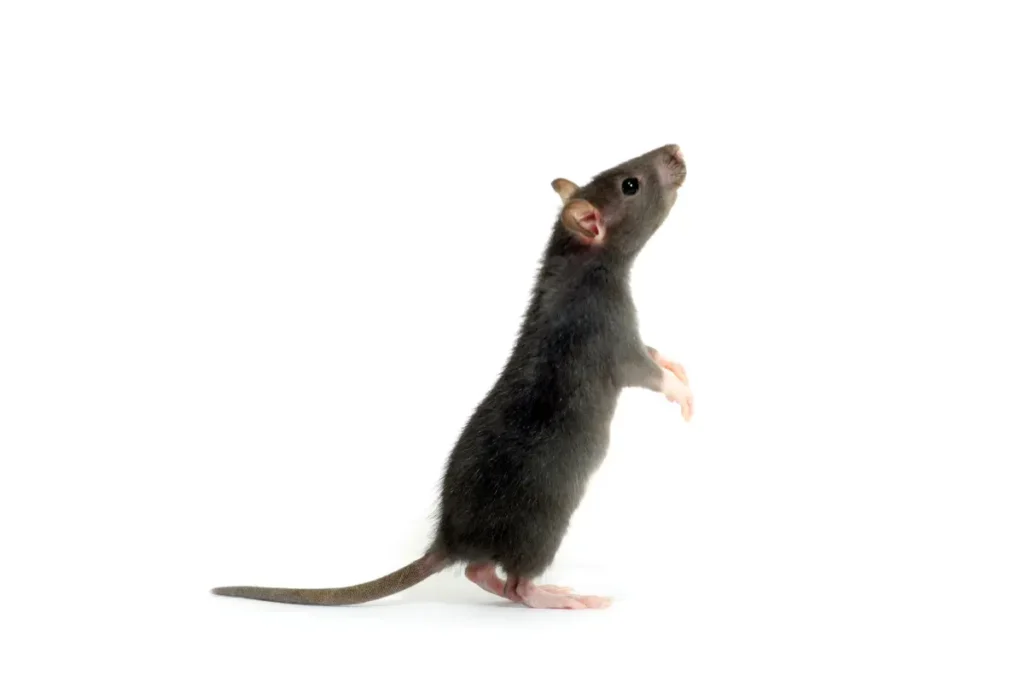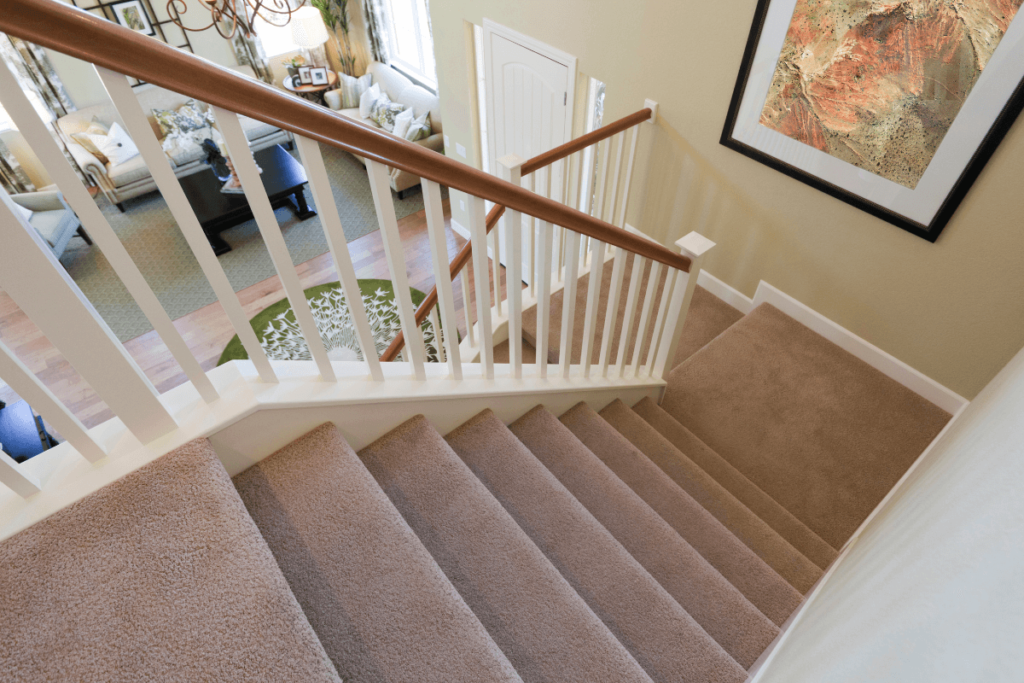Rats are lively and peculiar creatures who are always searching for something new. Sometimes, they move so quickly that your eyes can’t keep up with them. You may often see rats jumping in your home, but do you know; how high and far can rats jump?
Rats can jump both in horizontal and vertical directions. They can climb up to 1 meter in height and extend up to 33 cm in length. Rats are good climbers because they can spin their paws around the wrist. They jump trees, brick walls, and shrubs to enter your house and buildings.
Are you curious about rat jumping activities? Read the below article to find out everything about the various rat species’ leaping capacities.
How Well Do Rats Jump?

The most intriguing thing about the rats is that they are athletic animals and expert climbers. You would find rats as the most intellectual rodents if you compared them to other animals. Rats can jump, swim, climb, burrow, constrict, and deform. That implies that they can travel to almost any place.
Rats can climb textured places, including brick walls, dry wells, beds, metal sheets, concrete, and wood. If they can fasten their claws with a holder, they can jump from the wall like someone who exercises. However, they cannot jump on shiny and smooth surfaces. They can’t attain shining heights because their claws cannot pierce the exterior.
Thus, rats have an expert climbing technique that allows them to climb over walls and fences to access various locations.
How High Rats Can Jump Horizontally?
Rats may not appear particularly intelligent when you look at them, but you can tell how smart they are when they exhibit certain behaviors. According to The University of Vermont, rats can jump up to 48 inches horizontally, which equates to a distance of 4 feet. Therefore, if you set a trap in this range, they may climb over it and avoid becoming stuck.
Furthermore, they can jump over any obstacles you put in their way to get to any spot they desire, especially if it has anything that would draw them there. Above all, they can also climb horizontal pipes and ducts in their way.
How High Rats Can Jump Vertically?
Besides jumping horizontally, rats can also make a significant jump of around 3 feet or 36 inches vertically. Therefore, rats may jump over a barrier lower than 3 feet, allowing them to access whatever is inside.
Rats become more active when they discover their food sources in a specific location and while evading predators. So, whenever you place food in the range of rats, they can simply get through it. Building barriers outside your home that are taller than 3 feet is the best way to keep rats under control. Remember that you should only do this after ensuring that there are no rats in your house.
How Far Can Rats Jump?
Rats are nonetheless intelligent and capable of achieving several things, like falling from heights of up to 40 feet without suffering much damage. Rats are always in search of food. They can travel 100 to 300 feet in quest of food. They can forage for food up to 50 feet away from their nest.
That shows that rats can freely enter homes and other structures without risk of injury by jumping down from the top of your roof, the attic, or other locations. Additionally, rats are great swimmers and burrowers asides from being good jumpers. They can easily make tunnels through the ground and walls of your house.
Highest Jump Ability of Different Species of Rats
Although all rats can climb, their abilities depend on the type of species. Usually, rats jump 48-49 inches horizontally and 36-37 inches vertically, but the length can vary depending on the type, size, and height of the rats. Below are the jumping abilities of some popular species of rats:
| Types of Rats | Jumping range |
| Kangaroo Rats | 9 feet in the air |
| Roof Rats | 3 feet vertically & 4 feet horizontally |
| Pet Rats | 3 feet vertically & 4 feet horizontally |
| Norway Rats | 2-3 feet vertically & 4 feet horizontally |
| Baby Rats | 3 feet vertically & 4 feet horizontally |
| Pack Rats | 3 feet vertically & 4 feet horizontally |
| Fancy Rats | 3 feet in the air |
- Kangaroo Rats

Such rats are tiny two-footed rodents. They use unpredictable vertical jumps to get rid of their predators. According to the Journal of Experimental Biology, kangaroo rats can jump maximally up to nine times their hip height. It means they can jump up to 2.75 meters or 9 feet in the air. In kangaroo rats, the jump causes the hip, knee, and ankle joints to rise and the metatarsal joints to lower dramatically.
Although kangaroo rats have enormous limbs, the Journal of the Royal Society Interface asserts that these sections of the animals are not as efficient locomotors as their elongated counterparts.
- Roof Rats

These rats are also known as black rats, gray, house, and ship rats. As the name indicates, they are excellent climbers. They can cross electrical lines located above the ground. Additionally, they possess incredible athletic prowess, enabling them to travel horizontally over wires, climb vertically up pipes, and leap off a platform while still in motion.
From a standing position, roof rats can jump up to 3 feet (36 inches) vertically and 3 feet when approaching an obstacle while sprinting. Horizontally, they can jump 4 feet (48 inches) while falling less than 15 feet. Moreover, it can also fall from 50 feet height without any harm.
- Pet Rats

Rats like pet rats are small and sensitive creatures. Due to their small size, you may frequently fear that they will get hurt if they fall. However, you don’t need to worry because they can jump fences, beds, and other places.
Vertically, a pet rat can jump a distance of 3 feet to get its favorite thing. To access specific regions, it can also jump horizontally and cover a distance of more than 4 feet! It can thus jump both vertically and horizontally.
- Norway Rats

These rats are also known as brown, gray, and wharf rats. Additionally, they go by the name “super rats” because of their enormous size. Norway rats prefer to jump on flat surfaces, but their jumping abilities are almost the same as roof rats.
Vertically, Norway rats can jump 2 feet from a standing position, and at a sprinting point, they can jump about 3 feet distance. Moreover, they can jump 4 feet horizontally without falling apart. What’s more, they can drop from a height of 50 feet without being hurt.
- Baby Rats

These rats can jump the same as adult rats. They are proficient climbers and jumpers. You can observe them hopping from your beds to your yards whenever they enter your home. They can pass through a gap of half-inch diameter because of their flexible heads.
Vertically, they can jump around 36 inches and horizontally 48 inches without any hazard. Furthermore, they have a cunning climbing technique that allows them to climb over walls and fences to access several locations.
- Pack Rats

They are also known as wood rats. As the name indicates, they used to prefer woods and jungles to stay in. They are roughly 6-7 inches long, with their tails making up half of that measurement. Because of their propensity for stealing and storing domestic things, pack rats have an odd name.
They love to climb woods and jump from one thing to other. They can jump up to 3 feet vertically and 4 feet horizontally to reach their desired place without damage.
- Fancy Rats

Rats like fancy rats are the most common species of pet or domestic rats. Due to their same physiology as humans, they are widely used in medical labs. They are capable of jumping 0.9 meters, or 36 inches, into the air. Additionally, they can extend to a distance of around 13 inches or 33 cm from a smooth surface.
What can Rats Climb?
Rats are excellent climbers and jumpers. They have a 48-inch horizontal leaping range and a 36-inch vertical leaping range. Rats usually climb coated or textured surfaces, some of them are given below:
- Walls

As rats are energetic animals, they can climb walls, depending on their texture. They can climb walls if they have a rough surface and places to hold, for example, brick walls, stone walls, wood walls, and drywalls.
Walls with smooth surfaces are impossible for rats to climb. Rats fall down a wall made of tiles, polished glass, or even some plastics because they lack the requisite hold. So, if you want to keep rats away from your house and buildings, try to make your walls smooth and plain.
- Fences

Having a lot of surface roughness and frequently having a ladder shape, rats can simply climb fences. Chain links, concrete, vinyl, and wood are all commonly used household fences. Rats find it particularly simple to travel through chain-link fences because of their stability.
Rats can also climb concrete, wood, and vinyl fences because they have rough surfaces or a design that makes climbing possible. Although vinyl has a smooth surface, it has other parts that make it easy to climb.
- Out of Water
In addition to being excellent climbers and jumpers, rats are expert swimmers. Usually, rats can dive into the water and submerge themselves for up to 30 seconds. Moreover, they can swim up to 0.8 kilometers in open water. It’s roughly 1.5 miles away.
So, if a rat accidentally jumps into the water, it can climb out without trouble. If the water is too deep, all rats can dive within 2 minutes except Norway rats because they are excellent swimmers.
- Bucket
Rats can climb a 5-gallon bucket of water. They have a maximum jump height of 12 inches. Thus, they may scale out of the bucket. Additionally, you can observe them climbing smooth, vertical walls, such as those on the edge of a bucket as high as 12 inches.
Therefore, if you are making a bucket trap to get rid of rats, try to use a 55-gallon bucket to prevent rats from escaping through it.
- Trees

Rats are adept climbers and frequently use trees to scale roofs and enter attics. They can readily climb trees because they have rough trunks with various grips. Rats used to climb trees to search for food, such as the fruits or eggs of birds.
Some rats, such as roof rats, may climb a tree and then leap onto the top of a home or other structure. They are accustomed to doing this to build their houses in spaces between them.
- Drainpipes
Rats can crawl up drainpipes and use them as an entry point to your homes and buildings. They not only use them to get inside your homes but also destroy them through chewing or gnawing. Moreover, they can pollute your drinking water by nibbling on the pipes in your home, which results in leaks.
Make sure no food particles allure rats to prevent them from scaling drainpipes. Further, to inhibit rats from entering, make sure that all openings have drain valves.
- Stairs

Rats can ascend the stairs if they reach up towards the wall, carpet, wood, or railings. In the US, steps and stairs have 7 inches vertical and 10 inches horizontal height. Norway rats can reach a height of more than 20 inches from head to tail, whereas roof rats can reach a length of 13 to 18 inches. Thus, it is super easy for them to climb up the stairs.
Reasons That Make Rats Good Climbers
Rats are skilled climbers and can scale almost any surface, especially if it has a rough texture. They dig their paws into the surface to gain support when climbing. Rats thrive on every continent except Antarctica for various reasons, one of which is their climbing capacity.
Here are some reasons that make rats good climbers:
- Rats can grab onto things with ease due to their claws and pads.
- They can firmly hold surfaces because each of their five phalanges has sharp claws at the tip.
- As they ascend, their tails stabilize and give balance by cloaking around cables, wires, and strings.
- If you’ve ever seen a rat traverse a rope, you’ve probably noticed that they similarly utilize their tails as a slack rope walker uses a balance pole.
Final Thoughts
Rats are very agile climbers and can jump high. Due to their size and characteristics, they may fall from a height of 50 feet without suffering any harm.
After reading the above details, you may know how clever rats are. Contrary to what you would like to believe, they are not constrained by their capacity to climb surfaces. They are much more cunning and athletic than you think. However, some instruction and barriers will keep them in their areas.
Above all, if you see rats hopping around, don’t be alarmed; they will rarely trip and damage themselves.
FAQs
References
The University of Vermont
Wang, L. C., Hu, D. L., Ortega-Jimenez, V. M., & Wen, L. (2018). Jumping mechanics of desert kangaroo rats. Journal of Experimental Biology, 221(22), jeb186700.
Rankin Jeffery W., Doney Kelsey M. and McGowan Craig P. 2018Functional capacity of kangaroo rat hindlimbs: adaptations for locomotor performance. R. Soc. Interface.152018030320180303



